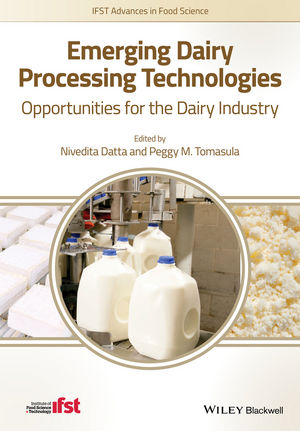Future dairy
The Industrial Internet of Things will disrupt the dairy industry (for the better)
Connecting devices throughout the supply chain and production – pumps, refrigeration equipment, etc. – can allow for more rapid analysis of operational data.

By Jason Andersen, VP of Business Line Management, Stratus Technologies
Challenges posed to dairy companies by the complex regulatory network of the FDA are only accentuated when their existing technology and infrastructure limit them even further. Strict compliance measures, coupled with pressures from the consumer marketplace (particularly tight turnaround times), inventory limitations and more make the dairy industry’s infrastructure ripe for disruption with Industrial Internet of Things (IIoT) technologies. To remain competitive, dairy companies must squeeze every ounce of speed, efficiency and responsiveness from their global supply chain. And doing this successfully means adopting automation technologies.
Building blocks of an intelligent industrial enterprise
Forward-looking enterprises are viewing this as an opportunity to modernize automation systems and IT infrastructures, from both a hardware and software perspective. A high-demand dairy production facility needs software that drives different processes, operates at all times and is easy to manage. It also needs hardware that forms a foundation enabling operations professionals to do their jobs without worrying about equipment failures.
Updating these pieces, rather than running legacy systems, opens up new connectivity that helps build faster, more intelligent dairy supply chains, an initial advantage of the IIoT. In a dairy operation, connecting devices throughout the supply chain and production – pumps, refrigeration equipment, etc. – can allow for more rapid analysis of operational data, enabling a range of powerful capabilities. Data produced by multiple devices needs to be analyzed by software and analytics packages, so the main consideration dairies need to be making is how to normalize and share that data. Right now, most operations don’t have an individual whose specific role is to analyze and make decisions based off that data, though that is beginning to change. The Data Scientist role is beginning to emerge in more operations to fill that gap and drive more dairies toward the ultimate goal of this intelligent enterprise – real-time process optimization.
Dairy plant quality control in real time
The IIoT can simplify many of the complexities stemming from FDA and other regulations. More automated, in-line analysis has begun to replace much of the hazard analysis that today is performed by manually collecting samples and sending them to a lab. Instead, with automation technologies, data can be made immediately available to centralized quality systems from samples tested at the edge of a dairy’s network using chemical and spectroscopic analysis. A real-time approach accelerates the identification of potential problems, allowing dairy operators to make adjustments more quickly, reducing waste and costs associated with quality problems that go unchecked.
The supply chain is another major area where dairies can benefit from real-time analysis. With multiple handoffs in the process of creating a dairy product between different companies, real-time analysis can enable alterations if an issue appears anywhere along that supply chain. For example, an issue that causes the shutdown of a processing line or facility might benefit from real-time analysis telling a producer to redirect incoming supply. Similarly, an increase in demand for one product versus another may prompt changes to the production schedule.
An evolution (not a rip and replace) of processes
The IIoT journey will be an evolutionary process for dairies as a full “rip and replace” implementation is not realistic. Operators can instead use a step-wise approach enabling a gradual transition while still realizing benefits of increased automation along the way. To start, “low-hanging fruit” might be reducing manual and paper-based processes that are capable of being digitized or delivering electronic insights to handheld devices on a plant floor (think capacity, outputs, temperature and more that can be analyzed at the plant or data center). Further capabilities can grow over time as dairy operators begin to see more value. This might lead them to transition to automatic data collection and analysis that will ultimately move them closer to a truly intelligent supply chain: one that shares analytics across many different boundaries (departmental, partner and even customer), creating efficiencies that improve the customer experience.
As the flow of data becomes more central to dairy operations, it also becomes more valuable. Given its ties to business-critical systems, it is essential to guarantee that any data directly impacting live processes always be available. Payments, compliance data, production analytics and more cannot be vulnerable to unplanned downtime. Operational teams are running very lean and more business-critical intelligence is flowing to and from the network edge. It’s become that much more important that dairy systems – homogenizers, pasteurizers, refrigerators, pumps and more – are able to be easily (and even remotely) serviced. Dairy companies want a complete view of the data across the entire life of a product and strive to unify the flow from the farm all the way to the refrigerator.
Making a business case for the IIoT in a dairy processing plant
The dairy industry is one particularly focused on ROI, given its narrow margins and intense competition. So where can dairy operators find the ROI payback from investing in IIoT? First and foremost is its ability to reduce risk by avoiding food quality or safety issues. Real-time quality analysis with IIoT technology can protect a dairy company from what could otherwise be a catastrophic product recall.
IIoT technologies also offer dairies the opportunity to connect with consumers in ways that can truly transform their businesses. Consider a situation where tracking consumer demand through an intelligent supply chain can feed insight into the company’s business analytics. Consider actual milk production and quality/butterfat measurements from dairy cow farms that is collected in tanks and is in transit for processing. The whole supply chain is time sensitive for freshness and safety and if a dairy processing center knows what to expect ahead of time coming in from sources like this, they’re better able to adjust. There is huge potential here with a more intelligent supply chain to improve production processes, overall efficiency and even offer premium pricing for extra fresh offerings.
Dairies need to be more lean and agile than ever before as they continue to face increasing pressure from both regulators and consumers. Like others in the food business, they operate on tight margins and have to meet stringent quality and safety regulations. Being lean and agile can lead to better planning and tighter execution, along with digital recordkeeping to track and trace the entire history and flow of product. Extracting and leveraging intelligence from across the supply chain with industrial automation and IIoT technologies will greatly determine how well dairy companies are able to overcome the challenges they face as they try to keep pace with their ever-changing industry.
Looking for a reprint of this article?
From high-res PDFs to custom plaques, order your copy today!









